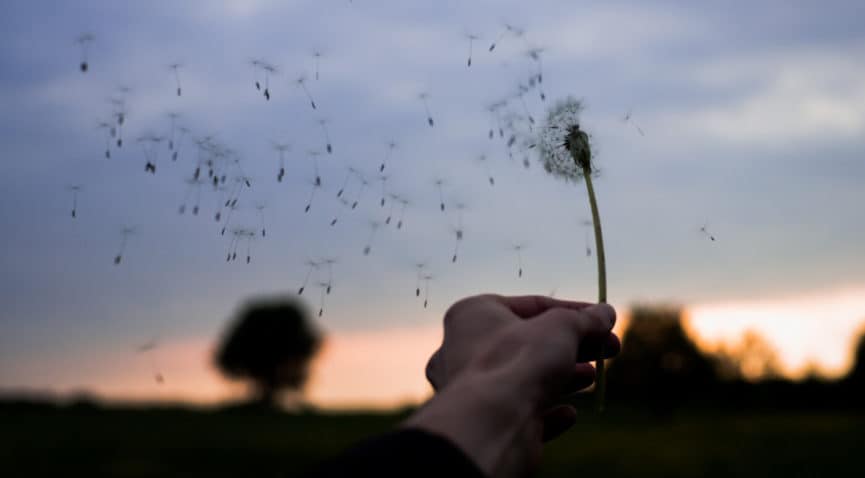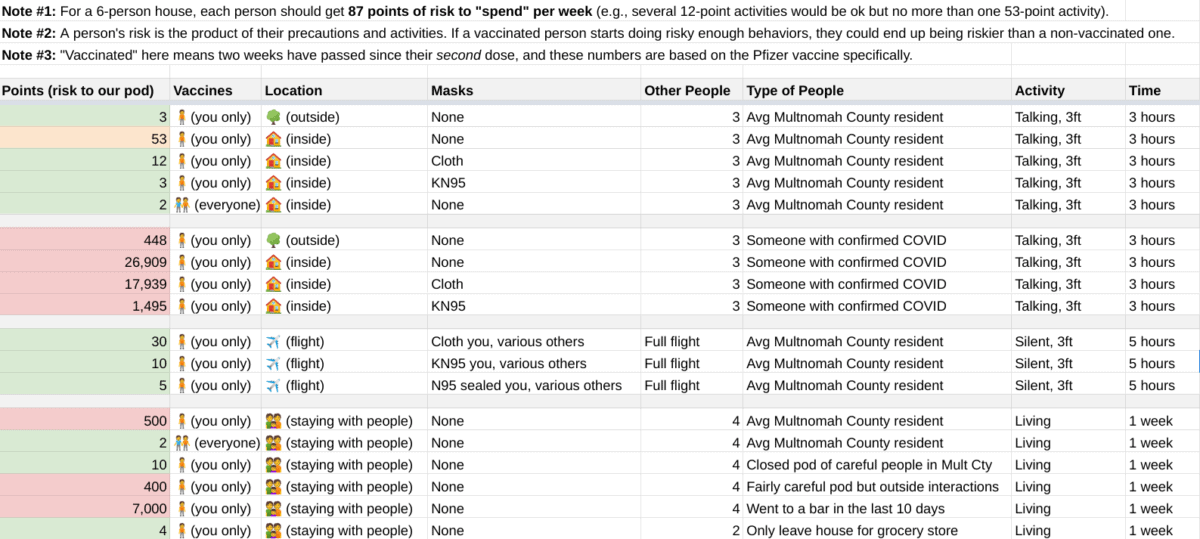This is post #5 in my COVID-19 series.
- #1 is here on general COVID info and precautions (somewhat outdated now)
- #2 is here on building a bubble/pod and navigating feelings, communication, and agreements (this info is still valid)
- #3 is here on specific risk management strategies using objective tools (this info is still valid too)
- #4 is here on the coronavirus variant discovered in the UK, the latest research-backed precautions, vaccines, and more
Disclaimer: I have no medical background. I’m simply someone who’s read a lot of articles and is skilled at summarizing and simplifying complex subjects.
Reading time: 8 minutes
(Updated on March 26: Added online dating section at the bottom.)
The vaccines are finally here! They’re still not available to a lot of people, but many of us now personally know someone who’s been vaccinated. The end is in sight, and that’s certainly cause for celebration.
I highly encourage you to sign up for an appointment as soon as the vaccine is made available to you. If you’re on the fence, please check out my last post on why the vaccine is safe and effective for the vast majority of people.
At the same time, it’s important to remember two things:
- The vaccines are amazing, but they’re not quite 100% effective. In other words, once you’ve been vaccinated, you’re highly unlikely to get COVID, but you’re not quite perfectly immune.
- It’s likely that the vaccine reduces transmissibility (i.e., the vaccinated person spreading the virus to others even if they themselves don’t get sick) by at least 61% according to the most recent study in late February. That’s great news, but that still means there’s a 39% chance of transmissibility. So, if you’re unvaccinated and hang out with someone who is vaccinated, it’s certainly safer than being around an unvaccinated person; but, it’s still possible that the vaccinated person could carry the virus on their body or in their nose and pass it on to you. In other words, even if the vaccine is 95% or so effective at preventing the vaccinated person from getting COVID, it’s only proven (at least so far) to be 61% effective at preventing that vaccinated person from passing COVID on to others.
What does all that mean?
(Important note: Everywhere I say “vaccinated people” below, I’m referring to people who have been fully vaccinated—two shots in most cases—and have waited two weeks after the final dose for it to fully take effect.)
- If you’re vaccinated: You can feel free to do pretty much anything you want with a group of other fully vaccinated people—all without masks! 🎉🎉🎉
- If even one person in the group is not vaccinated: Everyone still needs to be careful. Although the vaccinated people are unlikely to get COVID from that unvaccinated person (though it’s still possible), the vaccinated people could still get some of the virus on their skin or in their nose and pass it on to any unvaccinated podmates when they get home. (Remember that most people who have transmitted COVID over the past year were asymptomatic, meaning they didn’t realize they had it.)
- All that said, if you’re vaccinated (and waited two weeks), it’s pretty safe for you to visit (unmasked) a typical, careful pod of unvaccinated friends or family—as long as none of the unvaccinated people are part of a higher-risk group (e.g., chronic health conditions, pregnant, etc.).
- But, remember that all the small risks still add up. The above scenario isn’t quite as safe anymore if that pod you’re visiting contains, say, a health care worker who’s regularly exposed to COVID patients or a person who regularly hangs out with other groups of people indoors. Also, it’s a different level of risk for a vaccinated person to visit a single pod of unvaccinated people versus going back and forth between multiple unvaccinated pods (because they could carry the virus between them).
- If you’re unvaccinated: Hanging out with vaccinated friends is definitely safer than spending time with unvaccinated ones, but to stay safe it’s still best to take the usual precautions: masks, hand-washing, distancing, and so on. Until you can get the vaccine, remember the most important things:
- Hanging out outdoors is 20x safer than indoors.
- A distance of 10ft is 4x safer than 3ft.
- A hangout of 1 hour is 3x safer than 3 hours.
- Normal conversation is 5x safer than singing or yelling.
- An N95 is 8x safer than a thin cotton mask. A KN95 is 3x safer. A surgical mask is 2x safer. Please wear the best mask you can afford.
What does all this look like in practice? What are some real-world scenarios?
I keep mentioning the microCOVID calculator because that team has done an amazing job of keeping up with all the latest science and regularly updating their tool to account for the coronavirus variants, the vaccines, and so on.
I recommend you use their calculator and their more complex spreadsheet tool to run your own scenarios; but, I’ve run a number of common ones below to give you a sense of how things look where I live in Portland, OR.
Here’s my spreadsheet (data from March 18), and below is a screenshot.
Note: The left-most column lists the number of risk points (“microCOVIDs”) associated with that activity. That’s meant to help you understand what kinds of activities you can safely do in a week while ensuring that each member of your pod stays at a 1% or lower risk of getting COVID in a year. For a 6-person pod, each person can use up to 87 points per week (e.g., two activities each costing 40 points) and still keep to that 1% total risk level. (For a pod of 5 people, it’s 99 points per person per week; for 4, it’s 115; for 3, it’s 136; for 2, it’s 168.)
I hope that helps you more easily visualize the state of things now that vaccines are becoming more available.
One more question: Once we’re both vaccinated, can I be physically intimate with the person I’ve been dating online?
To me, this comes down to four questions:
- What types of precautions is this person taking and will they continue to take once they’re vaccinated? E.g., will they still be careful of being indoors with non-vaccinated people? Remember that the big things are: indoors vs. outdoors, high-quality masks, and keeping your distance from non-vaccinated people.
- How much do you trust this person? Do you believe they’ll be 100% honest with you about their precautions and how risky their lifestyle is? How well do you really know them? Are you confident that anyone else they’re being intimate with is vaccinated too?
- What are both of your pod situations like? Do you both either live alone or with people you trust? Are both of you podded only with people who are honest and open about the risks they’re taking on?
- Do either of you have any health conditions that increase your risk? (If your answer to this is “yes,” please don’t take my advice—instead, talk to your doctor, or at least do a lot of your own research on how your specific condition relates to COVID.)
If your answer to #4 is “no health risks,” your answer to #3 is “great pod, full trust,” your answer to #2 is “a lot of trust,” and the answer to #1 is “you’ll both still be cautious,” then I would personally feel ok about being physically intimate—have fun 🙂
Stay safe out there, and I hope you’re able to enjoy some awesome hugs and indoor meals with friends and family once you’re all vaccinated!


